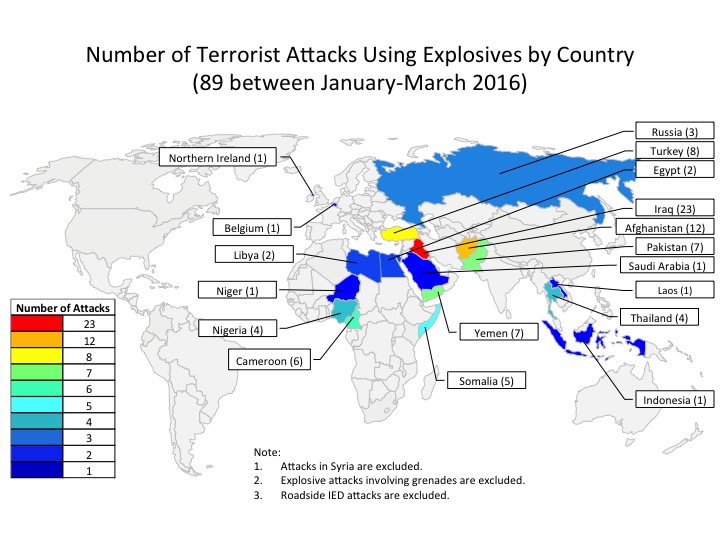
We talk a lot about the need for protection, the changes in our world that have increased the threats, and the requirement to be ‘ever vigilant’. But what are we really protecting against, and why? This article focuses on blast threats, but can be extrapolated to other attack modes.
Decisions about whether to provide blast protection, what type of protection, and how much blast protection should be provided, are difficult to make and should be reviewed on a regular basis. The decisions are difficult because:
- Threats change rapidly and unpredictably. Prime examples are the recent incidents in Paris and Brussels. Even though the intelligence services of France and Belgium may have had information that could have indicated a potential threat, it was not deemed sufficiently credible to take appropriate preventative action.
- Changes in the types of work or projects undertaken by an organization can dramatically alter the threat profile. For instance, an organization feeding children in Afghanistan may have a relatively low threat profile, but if they start providing Polio vaccinations, the threat will markedly increase.
- Changes in the immediate environment of a facility can also heighten (or lower) the threat. For example, the re-location of the US Embassy in the United Kingdom from Grosvenor Square to Nine Elms will change the threat landscape for both locations – for better or for worse.
In making protection plans and decisions, the first question people often ask is “Is this a high threat environment?” This is not an entirely straightforward subject. When you ask yourself this question, the first places that probably pop into your mind as ‘high threat’ are Afghanistan, Yemen, Syria, Somalia, and Iraq, etc., and you would not be wrong, these are indeed areas with high threat and a high tempo of attacks. The map below shows the number of explosive attacks around the world between January 2016 and March 2016 (Note that the background compilation of data for this map is from Wikipedia. While we do not generally use Wikipedia as a source, this particular page has compiled a fairly comprehensive list of information about terrorist attacks using various different news sources and each attack in the list has an associated news source referenced. We are therefore comfortable sourcing this list from Wikipedia.).
A glance at the map would tend to confirm that first thought regarding high threat environments. There were 23 attacks in Iraq, 12 attacks in Afghanistan, and 7 in Yemen. However, a closer look also reveals that there were more explosive attacks in Turkey than Somalia, which is counter-intuitive based on events in the past few years. Also indicated on the map are the recent bombings in Brussels. Brussels is the heart of the European Union government and the home of NATO headquarters. Until last month this city would not have made the Top Ten list of high threat locales and yet now it is the focus for counter-terrorism activities throughout Europe. Additionally, information regarding the efforts of Al-Qaeda and the Islamic State to export terror to western countries calls into question our more ingrained thoughts on ‘high’ versus ‘low’ threat environments. While there is no question that the active conflict zones around the world will continue to be at higher risk of explosive attack, we need to expand our definition to include crowded spaces, high profile targets, and buildings with high profile occupants; regardless of region.
So, rather than thinking of high threat environments in terms of countries, organizations (be they public or private) should consider the following questions:
- Do our operations place us in a higher probability target category?
- Are we located near higher probability targets?
- Do we have high profile employees or visitors who increase our target attractiveness?
- Would we be considered to be a crowded space?
- What attack modes are most likely to occur in our facilities?
- What are our assets that need to be protected?
- What is the current standard of care in our location and our industry?
For information like this, and more, check out our upcoming face-to-face course: Protective Knowledge – Protection In High Threat Environments.

